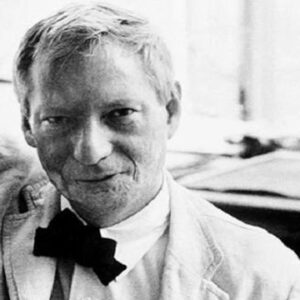Louis Kahn was a well-regarded architect during his lifetime. He worked in a variety of positions for numerous architectural businesses before establishing his own. Kahn continued to practice architecture and also became a lecturer at Yale School of Architecture and the University of Pennsylvania’s School of Design. The majority of his designs were gargantuan in scale and incredibly avant-garde in terms of design and styling. He received numerous accolades and was widely regarded as ‘America’s foremost living architect’ at the time of his death. Among his most illustrious and monumental works are the ‘Urban and Traffic Study,’ the ‘Yale University Art Gallery,’ the ‘Salk Institute,’ the ‘Indian Institute of Management, Ahmedabad,’ and the ‘Center of Philadelphia.’
Childhood & Adolescence
Louis Isadore Kahn was born Itze-Leib Schmuilowsky in Parnu, Estonia, to an impoverished Jewish family. He was raised in Kuressaare, Saaremaa, which was part of the Livonian Governorate at the time.
His family immigrated to the United States in 1906. They couldn’t even afford pencils due to their financial situation. As a result, they burned twigs to earn money from Louis’ drawings.
Later in life, he played the piano to accompany silent films at cinemas. He became a naturalized citizen in 1914 and took the name ‘Kahn’ the following year.
He attended the University of Pennsylvania and graduated in 1924 with a Bachelor of Architecture.
Louis Kahn’s Career
He began his career as a senior designer in the office of City Architect John Molitor shortly after graduating.
He toured Europe in the late 1920s and returned to the United States in 1929, when he worked in the Philadelphia offices of Paul Philippe Cret and Zantzinger, Borie, and Medary.
He and Dominique Berninger co-founded the Architectural Research Group in 1932. Among the projects on which he worked during this time period were unbuilt public housing complexes that he had offered to the Public Works Administration.
He collaborated with George Howe on a number of enterprises for the Philadelphia Housing Authority throughout the 1930s.
In the 1940s, he collaborated with Oscar Stonorov on Philadelphia’s housing expansion plans. In 1947, he began teaching at Yale University.
In 1950, he was appointed Architect in Residence at the American Academy in Rome, which is regarded as a career-high point. Following his visits to relics in Greece, Egypt, and Italy, he developed a fundamental approach to architecture. He developed his own style in response to previous contemporary movements.
Between 1951 and 1953, he was occupied with his first significant assignment, the design of the Yale University Art Gallery in Connecticut. This was his first masterwork and quickly rose to prominence as one of his most significant designs.
In 1956, he was named the Massachusetts Institute of Technology’s Albert F. Bernis Professor of Architecture and Planning. In the same year, he finished the design for the University of Pennsylvania’s Richards Medical Research Laboratories.
He returned to Philadelphia in 1957 to teach at the University of Pennsylvania, where he remained until his death. He was commissioned to design ‘The Salk Institute,’ which consisted of three distinct sections: laboratories, meeting rooms, and residential quarters.
In 1961, he was awarded a grant by the Graham Foundation for Advanced Studies in Fine Arts to investigate traffic flow and design an overpass system.
He was also a visiting professor at Princeton University during this same period. He began work on the Jatiyo Sangshad Bhaban in Dhaka, Bangladesh, a National Assembly building that was finished in 1974.
Among his most recent architectural works are the ‘Phillips Exeter Academy Library’, the ‘Kimbell Art Museum’, the ‘Yale Center for British Art, the ‘Franklin D. Roosevelt Four Freedoms Park’, and his final work, the ‘Flora Lamson Hewlett Library’, which was finished in 1979.
His Significant Works
His magnum accomplishment is believed to be the ‘Jatiyo Sangshad Bhaban’ in Dhaka, Bangladesh. It took him twelve years, beginning in 1962 and concluding in 1974, to create this spectacular edifice. It is still one of the most significant structures in Bangladesh.
Muzharul Islam commissioned him to construct this edifice, which he collaborated on with his Yale University students. The structure, which is one of his largest, contains dining halls, hostels, a hospital, and the main Parliament building.
Awards and Accomplishments
He was honored with the AIA and RIBA Gold Medals.
Personal History and Legacies
He married Esther in 1930 and the couple had one daughter.
He soon developed feelings for Anne Tyng, with whom he was working. Alexandra Tyng is the couple’s daughter.
He also fathered a son with Harriet Pattison.
He died of a heart attack in a toilet at New York’s Pennsylvania Station. His remains remained unidentified for three days due to the strikeout of the address on his passport. Kahn was deeply in debt toward the end of his life, despite a lengthy and successful career.
His work influenced a number of prominent architects, including Muzharul Islam, Robert Venturi, Jack Diamond, Moshe Safdie, and Richard Rogers.
Lewis Spratlan’s Pulitzer-Prize winning chamber opera Architect was a personality study of Kahn and his creations. He was also the subject of the documentary ‘My Architect,’ and an episode of the popular series ‘Law & Order: Criminal Intent was based on his family life.
Estimated Net worth
Louis is one of the wealthiest architects and is placed on the list of the most popular architects. Louis Kahn’s net worth is estimated to be $5 million, based on our analysis of Wikipedia, Forbes, and Business Insider.
Trivia
When he was three years old, this great American architect was mesmerized by the light emanating from the coal-burning on the stove. He donned an apron and stuffed some coal into it, which caught fire and burned his face. On his face, the scars from these early burns lingered.


